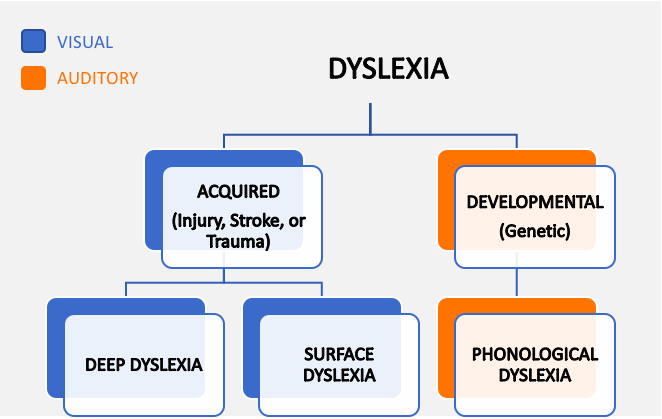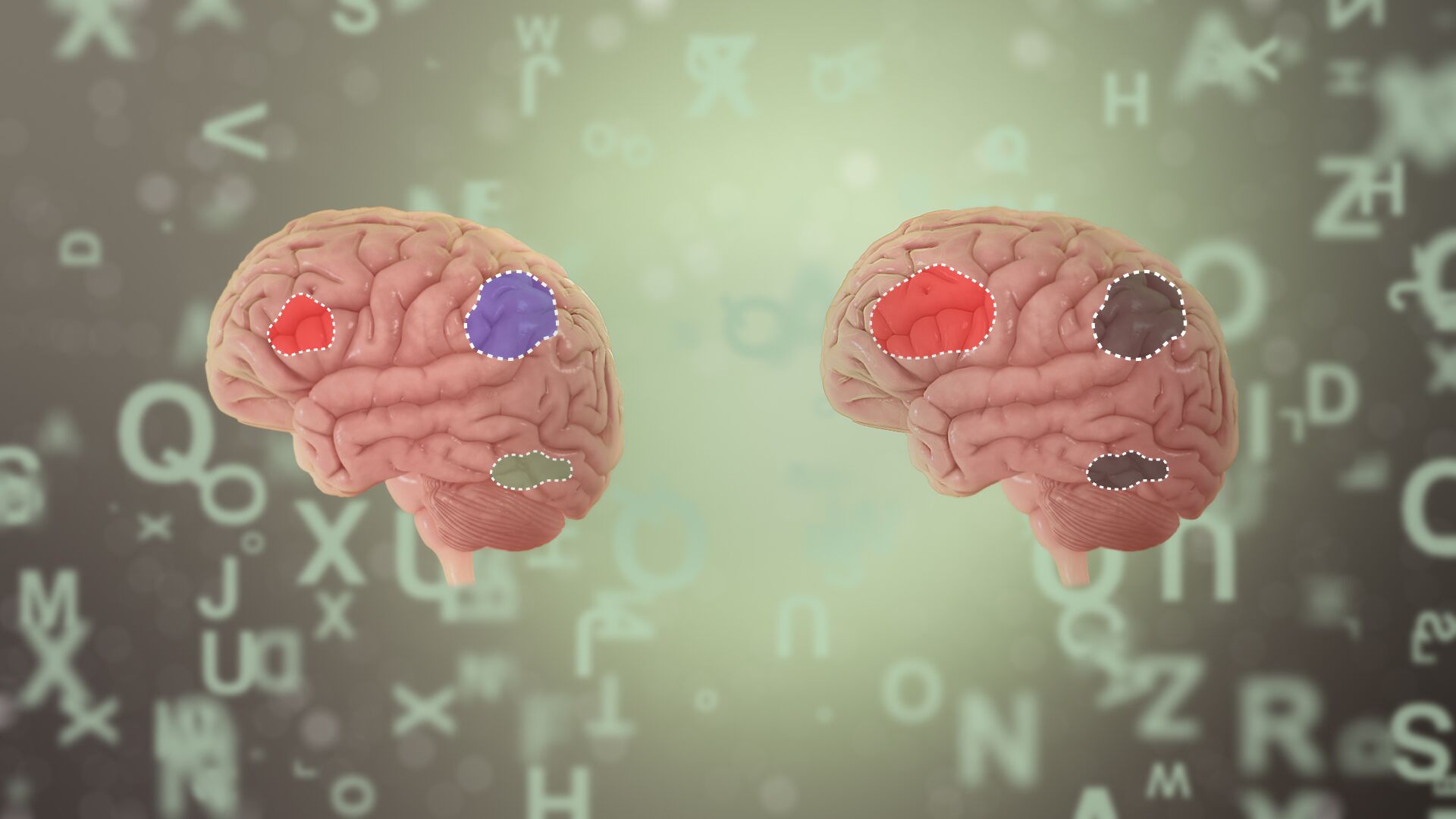Between 5-15% of people in America have dyslexia -- a neurological condition in which a person finds it difficult to read and learn. This is because the brain is unable to properly process (recognize, spell and decode) alphabets and numbers. Dyslexia, in no way, is due to lack of intelligence.
Dyslexia is a multifaceted disorder that, in spite of massive research, still remains mysterious. Early diagnosis and early intervention promote better outcomes.
Classification of Dyslexia:

Based on the time of onset, dyslexia could either be genetic or developmental, i.e. inherited from the family since birth, or could be an accidental outcome of an injury to the part of the brain that controls reading and writing, known as acquired dyslexia.
When the child faces extreme difficulty in reading due to inability to break down the basic sounds of language, it indicates phonological dyslexia.
Surface dyslexia is characterized by difficulty in recognizing and spelling words for which the mapping between print and sound is not governed by rules. Tricky words like colonel, yacht, island that have irregular spelling-sound correspondences appear as a major challenge for surface dyslexics.
Deep dyslexia can be observed in people who commit semantic errors, i.e, reading out a related word for a the written word. For instance, 'table' may be read for 'chair', 'street' for 'road' or 'dog' for 'canine'. This is partly because of poor ability to sound out words and an over reliance on sight words.
Causes
- Brain Structure: MRI and PET scans have shown a clear correlation between structural and functional differences in the brains of dyslexic children.
- Researchers believe that dyslexia runs in families. Post autopsy brain examinations of dyslexic people has revealed anatomical abnormalities in the language center of the brain such as malformations in the cerebral cortex. Such abnormal cortical developments are believed to occur till the sixth month of fetal brain development. Genes including DCDC2 and KIAA0319 on chromosome 6, and DYX1C1 on chromosome 15, have been associated with dyslexia.
- Dyslexia may even arise in adulthood as a consequence of a traumatic brain injury, stroke, or dementia.
Mechanism

Research has shown that reading directly reflects spoken language. The process involves recognition of the visual sequence of letters in a specific order and correlating them with the proper phonology. As per the currently believed hypothesis, abnormal phonological processing in the prereading years is likely to cause inefficient mapping during the development of reading, which, in turn, disrupts the functional specialization of the visual areas in the brain.
Two different cognitive routes come into play when a person reads out aloud- the lexical route, the process by which readers understand the words by sight alone, and the sub-lexical route, whereby the reader can “sound-out” a written word by identifying its parts (letters) and applying knowledge of how these parts are linked to each other. A dyslexic brain appears to arise from the combined effects of several genes that may hamper either of the above two pathways.
Management and Treatment
There are many theories about successful treatment for dyslexia, but no actual cure for exists for it yet. Parents can play a key role in helping their child fight dyslexia. Reading aloud to children at a young age, having them listen to recorded books, encouraging them to read after school and making it enjoyable to read are small interventions that can have impact.
There are reading programs focussed towards helping dyslexic children:
- Orton-Gillingham- Follows a technique that step-by-step explains how to match letters with sounds, and recognize the sound of each letter in a word.
- Multisensory instruction- It teaches children how to use all of their senses (touch, sight, hearing, smell, and movement) to learn new skills.








